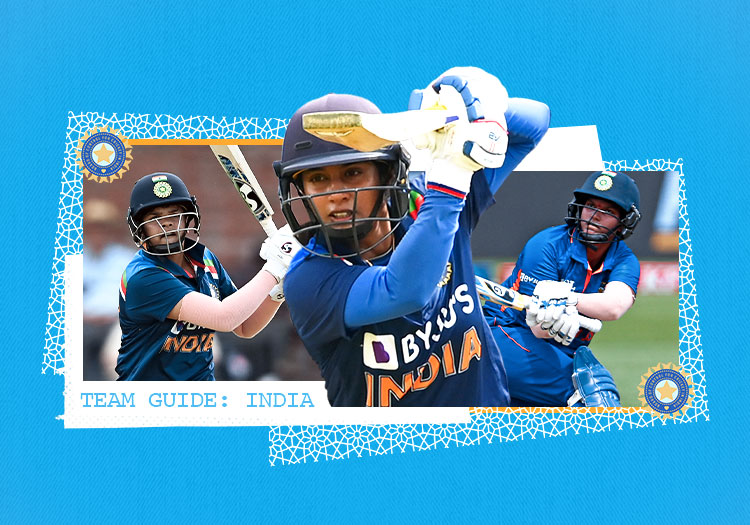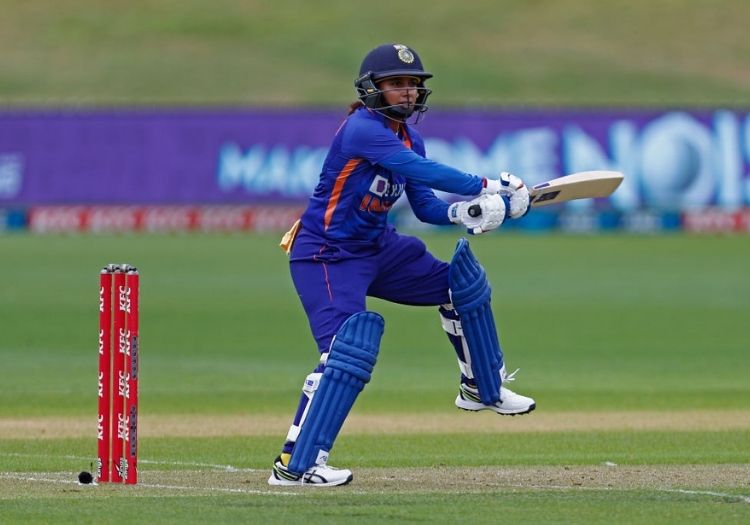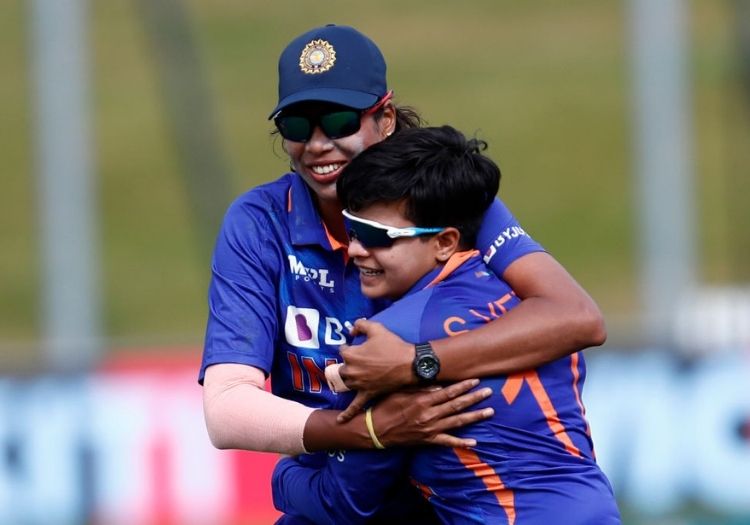The Cricketer's in-depth look at the Indian squad ahead of the tournament in New Zealand

Coach: Ramesh Powar will be at the helm for the 2022 Women’s Cricket World Cup. The 43-year-old former India international previously served as head coach during the 2018 Women’s T20 World Cup before being re-appointed to the position in May 2021 as a replacement for WV Raman.
Captain: Mithali Raj will skipper India for the third 50-over tournament in a row and steered her side to the final in 2017, leading from the front with a team-leading 409 runs – only one fewer than the tournament’s leading run-scorer Tammy Beaumont. Since the 2017 final, the veteran batter has led her side to series wins over England (twice), South Africa (twice), New Zealand, Sri Lanka and West Indies. However, India haven’t won an ODI series since October 2019.
Superstars
Smriti Mandhana: The reigning ICC Women’s Cricketer of the Year and a force to be reckoned with at the top of the order. Despite playing fewer matches than almost every around her, she is among the top 10 run-scorers since the 2017 final and has scored at a 90-plus strike rate during that period, offering India some much needed explosivity. Her 50-over form has dipped over the past 18 months, with the 25-year-old arriving in New Zealand with just two half-centuries in her past 11 innings, but her numbers – over 2,000 ODI runs and a 40-plus average – speak for themselves.
Jhulan Goswami: Like Mandhana, the ageless Goswami has also flourished since the 2017 final, picking up 50-plus ODI wickets over the past four-and-a-half years. Though no longer one of the fastest bowlers on the circuit, the 39-year-old, who is ranked fourth in the ICC rankings, remains a miserly medium pacer. Only two players – Lynette Fullston (39) and Carole Hodges (37) – have taken more Women’s World Cup wickets than Goswami’s 36.
Deepti Sharma: Sharma is India’s leading allrounder. Sitting third in the ICC rankings, the 24-year-old has struggled to deliver a complete performance with bat and ball in recent months but has shown flashes of form in New Zealand – she picked up four wickets in the second ODI and score 69 not out off 69 in the third. She had similar struggles heading into the 2017 tournament but emerged with 216 runs and a team-leading 12 wickets.
Rising star
This spot should have been filled by Jemimah Rodrigues but in her absence, Richa Ghosh is the standout youngster. The 18-year-old wicketkeeper only made her ODI debut against Australia in September but quickly usurped Taniya Bhatia behind the stumps thanks to her superior batting. A rapid middle-order scorer, Ghosh has an ODI strike rate in excess of 90 and recently scored her maiden international half-century, dispatching 65 runs off 64 balls at no.6 in the second ODI against New Zealand. The teenager may prove to be a crucial player in Rodrigues’ absence.
It's also worth keeping an eye on 21-year-old top-order batter Yastika Bhatia. Like Ghosh, she has made a splash over the past 12 months, most notably against Australia in September 2021 when she scored 64 runs off 69 balls in India’s landmark victory. Inconsistent but has a match-winning knock up her sleeve.

BATTING
Power hitters
In Smriti Mandhana and Shafali Verma, India have a dynamic and powerful opening duo. Mandhana is a proven 50-over boundary fiend and sits alongside Alyssa Healy, Lizelle Lee, Deandra Dottin and Ashleigh Gardner as the only women score 20-plus sixes since the 2017 final. She’s also blasted over 175 fours, averaged above 50 and posted a strike rate in excess of 90 over the same period.
Verma is still in her 50-over infancy, having only made her international debut in the format last June. And while she’s yet to set the ODI stage on fire, her T20I stats are impressive – 83 fours and 33 sixes in 29 appearances.
Anchor
Frustrating as her strike rate may be, Mithali Raj nails the anchor brief. Her strike rate since the 2017 final has dipped below 65 – the lowest of any of the top 20 run-scorers during that period – but she has maintained an average above 50. She arrived in New Zealand with six half-centuries in her previous 11 innings and kicked off India’s five-match ODI series against the White Ferns with back-to-back fifties.
Finisher
India have a few options in this department, with Deepti Sharma and Harmanpreet Kaur both capable of taking the game to the bowlers. However, on current form, their best bet is probably Richa Ghosh. The wicketkeeper has taken to the conditions in New Zealand, scoring her maiden international fifty in Queenstown, and has an impressive 90-plus strike rate in her short ODI career.
Problem areas
Where to start? Despite the presence of Raj, Kaur, Sharma and Mandhana, this Indian batting line-up lacks experience with Yastika Bhatia, Ghosh and Verma all making their ODI debuts in within the past 12 months. There’s a lot of pressure on Verma, in particular, to replace the 381 runs scored by Punam Raut in 2017.
Several players, including Sharma and Mandhana, are not in great form but perhaps the most concerning is Kaur. The allrounder lit up the 2021 WBBL with 406 runs at 58 but has scored just two ODI half-centuries since the start of 2018. Her position in the side is rapidly becoming untenable but there is no obvious candidate to replace her – Sneh Rana is inexperienced and isn’t a comparable batting option while Sabbhineni Meghana, who scored a blistering 41-ball 61 in the third ODI against New Zealand is only a reserve player.
The other area of concern is in the finisher department, with only young Ghosh showing similar explosivity to Mandhana’s. In 2017, Veda Krishnamurthy impressed in the middle order, scoring 153 runs at a strike rate of 112.50, and although she’s yet to transfer her form from The Hundred onto the international stage, the decision to leave Jemimah Rodrigues in India may come back to haunt them.

BOWLING
Speed merchants: Jhulan Goswami is the standout pacer in the Indian attack. The 39-year-old oozes control and is a highly economical bowler, arriving in New Zealand with an ODI economy of 3.33. Expect her to bookend the innings with the ball.
Her partner in the powerplay is likely to be fellow right-arm medium pacer, Pooja Vastrakar. The 22-year-old cemented her place in the side against Australia in September, impressing with figures of 3 for 46 in the third ODI.
Meghna Singh and Renuka Singh, the only medium-fast bowler in the squad, complete the pace attack. However, both players are short on experience with fewer than 10 ODI caps combined.
Variation: Poonam Yadav leads India’s spin attack. The 30-year-old leggie, who has over 50 ODI caps to her name, was integral in India’s run to the final in 2017, taking 11 wickets and conceding just 3.86 runs per over. And she’s continued that form over the past four-and-a-half years, joining Goswami among the top 10 wicket-takers.
Off-spinning allrounder Deepti Sharma and Rajeshwari Gayakwad add bags of experience and will likely be the first change bowlers following Goswami and Vastrakar. Left-armer Gayakwad, who is both economical and a proven wicket-taker, flies under the radar compared to some of her teammates but is one to watch.
Off-spinners Sneh Rana and Harmanpreet Kaur are additional options. The former has only been used intermittently since making her debut in 2014; the latter has taken just eight ODI wickets since the start of 2018 but showed strong form in the WBBL, picking up 15 wickets.
Problem areas: India’s pace department risks being over-reliant on Goswami, which may be an issue given her advancing years. Player management will be crucial here and India may come to regret leaving Shikha Pandey, who took eight wickets in 2017, at home. Variety is also a concern with just one left-handed bowler – Gayakwad – in the squad and no genuine pace bowler in the mould of Shabnim Ismail. And of course, you never know which Kaur is going to show up.
FIELDING
Gun fielder
Deepti Sharma is something of a triple-threat, adding agile fielding to her impressive skills with bat and ball. She has taken the seventh-most catches in ODI cricket for India and of the players ahead of her, only Rumeli Dhah has a better catches per innings ratio.
Who takes the gloves?
Richa Ghosh in the incumbent wicketkeeper. Over the past 12 months or so, she has wrestled the gloves from Taniya Bhatia in both white-ball formats thanks to her superiority with the bat. Though inexperienced, the teenager is not only a safe pair of hands but also a rapid run-scorer in the middle order. Bhatia has travelled to New Zealand as her understudy.
Squad: Mithali Raj, Taniya Bhatia, Yastika Bhatia, Rajeshwari Gayakwad, Richa Ghosh, Jhulan Goswami, Harmanpreet Kaur, Smriti Mandhana, Sneh Rana, Deepti Sharma, Meghna Singh, Renuka Singh, Pooja Vastrakar, Shafali Verma, Poonam Yadav
Reserves: Simran Bahadur, Ekta Bisht, Sabbhineni Meghana
Fixtures: March 6 – Pakistan (Mount Maunganui), March 10 – New Zealand (Hamilton), March 12 – West Indies (Hamilton), March 16 – England (Mount Maunganui), March 19 – Australia (Auckland), March 22 – Bangladesh (Hamilton), March 28 – South Africa (Christchurch)
Possible starting XI: Mandhana, Verma, Bhatia, Raj, Ghosh (wk), Sharma, Kaur, Vastrakar, Goswami, Gayakwad, Yadav
OTHER TEAM GUIDES (open in external window in app)